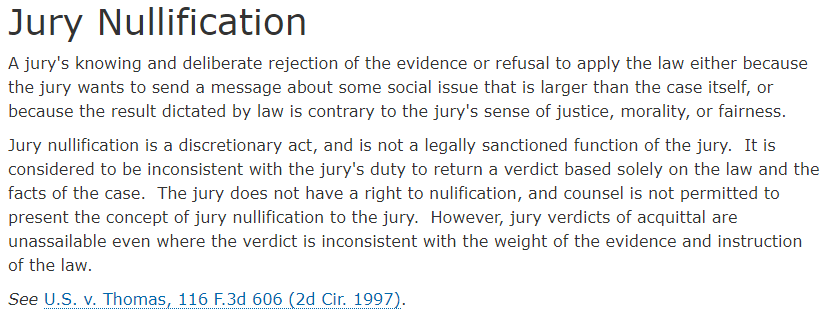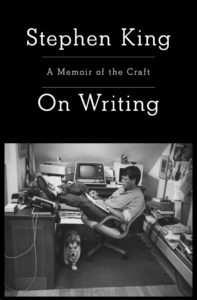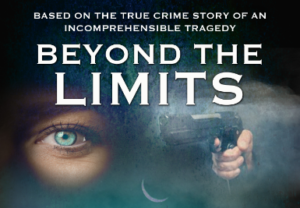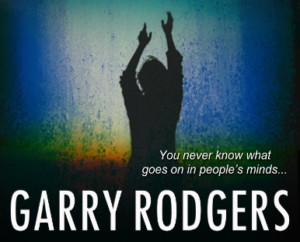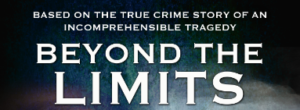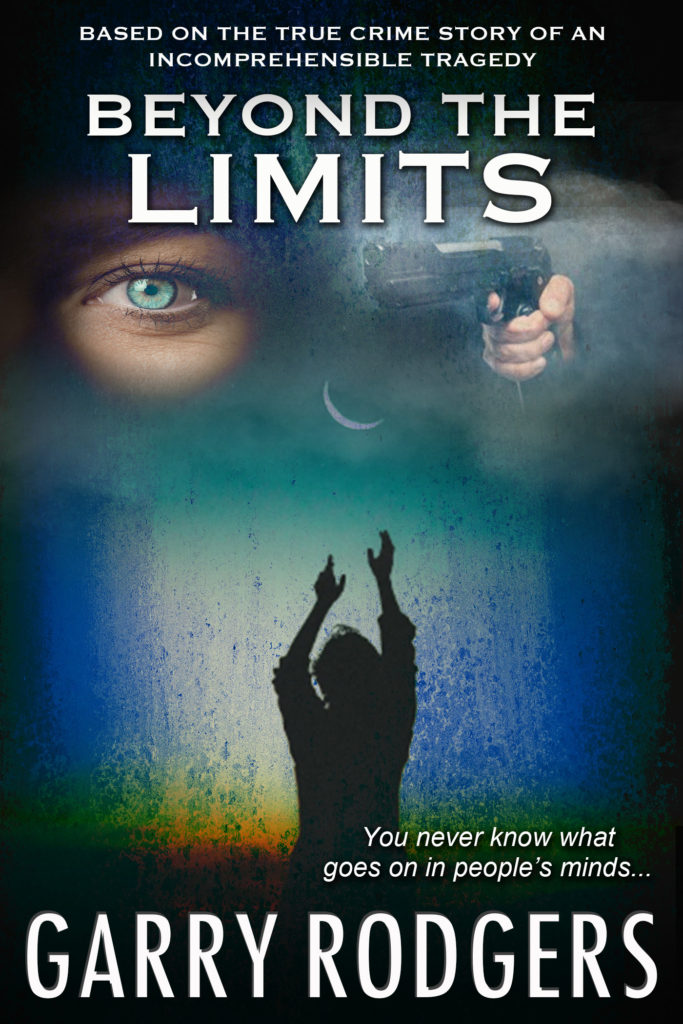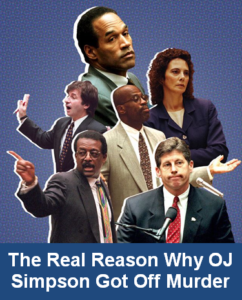 They called it the trial of the century. I call it the travesty of all time. Either way you look at it, the O.J. Simpson murder case was exceptionally high profile. Millions of people around the world watched the eleven-month spectacle known as the O.J. trial. It had all the right TV elements—celebrity superstar, the Dream Team defense, allegations of corrupt cops, supposedly compromised witnesses and contaminated evidence, not to mention playing the race card from the bottom of the deck. It ended with O.J.’s acquittal when the jury nullified his indictment. Twenty-five years later, the big reason why O.J. Simpson got off murder is now black and white.
They called it the trial of the century. I call it the travesty of all time. Either way you look at it, the O.J. Simpson murder case was exceptionally high profile. Millions of people around the world watched the eleven-month spectacle known as the O.J. trial. It had all the right TV elements—celebrity superstar, the Dream Team defense, allegations of corrupt cops, supposedly compromised witnesses and contaminated evidence, not to mention playing the race card from the bottom of the deck. It ended with O.J.’s acquittal when the jury nullified his indictment. Twenty-five years later, the big reason why O.J. Simpson got off murder is now black and white.
Before examining the big reason why O.J. got off, it’s necessary to look at the overall picture—the preponderance of the evidence—and examine investigation and trial components to see what went wrong. It’s the combination of prosecution errors and defense counsel tactics that turned an open-and-shut homicide case into a three-ring media circus. Ultimately, this shameful chain of events caused jurors to reject convicting an absolutely 100% guilty man.
How I got onto this subject was recently reading (or trying to read) Outrage by Vincent Bugliosi. The 1996 book is subtitled The Five Reasons Why O.J. Simpson Got Away With Murder. You might recall who Vincent Bugliosi is. He’s the power-prosecutor who put away the Charles Manson Family and wrote the book Helter Skelter.
Vincent Bugliosi had no part in the O.J. prosecution. He was commissioned to write a critical book. As a lawyer who prosecuted over a hundred murders in his career, and losing only one, Bugliosi earned the right to critique the O.J. trial. That he did with ferocity in Outrage.
I find Bugliosi’s writing style hard to read. He’s verbose and rambling, bombastic and sarcastic, not to mention arrogant and conceited. Give me a good Bob Woodward book any day, but I did make it through Outrage. I also went down a spiraling research tunnel that started with internet rabbit-holing, and I found more people with equally-great accreditations who had one more point to offer than Bugliosi’s five reasons why O.J. got off the murder charges.
I agree with all five of Vincent Bugliosi’s reasons. Just because I don’t particularly care for his script doesn’t mean he’s wrong on any point. I just think he missed another major point that led to the indictment’s nullification—and he failed to summarize his five points into the one big reason why O.J. Simpson got off murder. Before I list Bugliosi’s five criticisms, the 6th point, and the overall #1 reason, let’s do a quick review of the case history.
The O.J. Simpson Case History
Orenthal James Simpson was a black National Football League superstar. He was also a movie star and product endorser for a major orange juice producer. Over the years, O.J. got the nickname “The Juice”.
O.J. married Nicole Brown, a white woman, in 1985. They were wealthy, had two children, and had a host of celebrity friends. They also had extreme marital challenges—many fights that ended in violence.
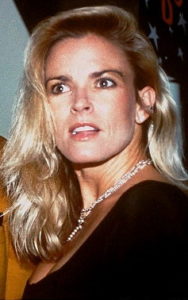 Looking back, Nicole Brown-Simpson was the classic victim of battered woman syndrome. The murder investigation identified sixty-two documented incidents where the Simpsons fought. They resulted in his threatening her life, her seeking protection in women’s shelters, and even the police intervening and arresting O.J.
Looking back, Nicole Brown-Simpson was the classic victim of battered woman syndrome. The murder investigation identified sixty-two documented incidents where the Simpsons fought. They resulted in his threatening her life, her seeking protection in women’s shelters, and even the police intervening and arresting O.J.
Nicole filed for divorce in February 1992. She cited irreconcilable differences rather than repeated assaults and mental cruelty. Despite the divorce, O.J. kept stalking Nicole. She called a women’s shelter four days before her death, reporting continual harassment from O.J. and that a set of keys for her home were missing.
On June 12, 1994, Nicole Brown-Simpson attended a dance rehearsal for her daughter in Santa Monica, California which is the Los Angeles suburb where they lived. O.J. was there as a legitimate father, and he attempted to reconcile with her. Nicole refused. She then went to dinner at a restaurant where Ron Goldman worked.
Ron Goldman and Nicole weren’t a romantic item. They were friends, and Nicole’s mother accidently left her eyeglasses at the restaurant when the dinner party left. Once Nicole got home, a phone call verified the glasses were left behind and Ron Goldman offered to drop them off at Nicole’s home when he got off work.
Nicole Brown-Simpson and Ron Goldman were found stabbed to death outside Nicole’s home. They were discovered by a neighbor at 12:10 a.m. on June 13, 1994. Autopsies indicated their times of death to be approximately 10:30 p.m. on June 12.
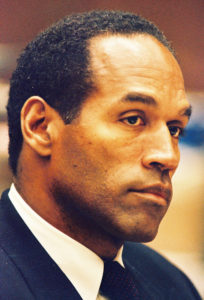 O.J. Simpson was an immediate suspect. The LAPD followed a trail of blood from Nicole’s home to O.J.’s estate—a five-minute drive away. O.J. was already gone. He’d taken a red-eye to Chicago and was in a hotel room when LAPD detectives phoned him to give him the notice that his ex-wife was dead.
O.J. Simpson was an immediate suspect. The LAPD followed a trail of blood from Nicole’s home to O.J.’s estate—a five-minute drive away. O.J. was already gone. He’d taken a red-eye to Chicago and was in a hotel room when LAPD detectives phoned him to give him the notice that his ex-wife was dead.
O.J. Simpson flew home to Los Angeles. He consented to an interview with detectives in which he denied involvement in Nicole and Ron Goldman’s deaths. He could not offer a verifiable alibi for the murder time, and he gave a weak explanation for a recent cut on his left hand.
The LAPD investigative team identified enough physical evidence to tie O.J. Simpson to the murder scene, as well as tying the victim’s blood to his personal residence. The DA filed a two-count murder indictment against Orenthal James Simpson for the criminal deaths of Nicole Brown-Simpson and Ronald Goldman.
The DA and O.J. Simpson’s lawyer worked out a surrender deal. But, instead of surrendering at the police station, O.J. Simpson pulled off the most famous slow-speed chase in the history of the world. Many millions watched on live TV as O.J. in a white Ford Bronco crawled along a LA freeway—O.J. in the back with a handgun to his head as his buddy drove slowly along with a mass of lights-flashing police cars right behind.
O.J. finally surrendered—without a violent incident. He went into custody while the police searched the Bronco. Besides O.J. leaving three letters which amounted to confessional suicide goodbyes, the police found $8,000 in cash, his US passport, a disguise with a hat and false whiskers, as well as a change of clothing and a .357 revolver. If there ever was evidence of a flight risk, this was it, and O.J. Simpson remained in custody for the next year and a half while his eleven-month farce trial played out.
I’m not going to go into the mass of evidence surfaced in the Brown-Goldman investigation and dealt with in the O.J. Simpson trial. That is far too complex for a blog post. Unfortunately, it was far too complex for the prosecution team to present, and far, far too complex for a jury to grasp—especially when the Dream Team defense did everything they could do to cloud the jurors’ vision.
In Outrage, Vincent Bugliosi identified five reasons why O.J. Simpson got away with murder. I’m convinced he’s right. However, I’m convinced there’s one more significant reason why the jury nullified Simpson’s indictment. But we’ll start with Mr. Bugliosi’s points.
1. Media Crime and Pretrial Coverage Influenced the Jury
I have no doubt whatsoever the massive live-media coverage of the slow-speed, white Bronco chase embedded itself in the nation’s psyche. Especially Los Angelers where it hit close to home as they scurried to overpasses to watch the scene pass by. You just don’t forget something as crazy as this.
 I know I didn’t. I watched the performance up in Canada, and I was a murder cop with eighteen years of experience when this nut-show went down. I’d certainly heard of O.J. Simpson from his NFL fame, and I kinda got a kick outa his spoofy character in the Naked Gun movie.
I know I didn’t. I watched the performance up in Canada, and I was a murder cop with eighteen years of experience when this nut-show went down. I’d certainly heard of O.J. Simpson from his NFL fame, and I kinda got a kick outa his spoofy character in the Naked Gun movie.
I can’t imagine the impression the chase, arrest, and the wait-up to the trial took on the Los Angeles jury pool. And I can’t imagine anyone able to serve on the jury not hearing of the pre-trial events. Or having a pre-formed opinion about O.J. Simpson, his domestic situation, and the Los Angeles justice system.
2. Venue Change From Santa Monica to Downtown LA
Bugliosi is livid about this in Outrage. He has a good right to be. This was a shady, shady deal. Bugliosi pins this on a political move by the LA County Da, Gil Garcetti, who Bugliosi greases as a political hack of the lowest form.
Bugliosi may be right, or he may be wrong, about DA Garcetti’s character. But the decision to venue change from the suburban crime scene jurisdiction of Santa Monica to the urban downtown core of the City of Angeles was a fatal move. The juror gene pool racial demographics of inner LA compared to outer SM are cheese to chalk. The juror perceptions are even further apart.
O.J. Simpson and Nicole Brown-Simpson lived in upscale Santa Monica because that’s where their peers lived. O.J. was no more inner-city black than I am an Ivy League white. There’s a thing in jury common law that says a person has the right to be tried by peers in their local jurisdiction. (It might even be in the Constitution—yes, just checked. Amendment 6 covers this for US citizens.) Putting the Simpson case into a downtown LA jury pool, rather than into a Santa Monica peer-pool—a lesser-educated and racially different peer-pool—entirely changed the social dynamics, and this seriously affected the jury panel’s psyche.
3. The Judge Lance Ito Factor
Who can forget the totally-out-of-his league O.J. Simpson trial judge by the name of Lance Ito? This guy had no more business running a major murder trial than I do performing in Carnegie Hall. Man, what a travesty of justice, and he was sitting on the bench through the entire process.
 Bugliosi dismisses Lance Ito as a star-struck buffoon—someone who was unfit for Night Court (if anyone remembers the old comedy sit-com where the judge was actually the one with street smarts) or to replace Judge Judy. Good Lord, during the trial Judge Lance Ito would accept fan gifts and invite celebrities back into his chambers.
Bugliosi dismisses Lance Ito as a star-struck buffoon—someone who was unfit for Night Court (if anyone remembers the old comedy sit-com where the judge was actually the one with street smarts) or to replace Judge Judy. Good Lord, during the trial Judge Lance Ito would accept fan gifts and invite celebrities back into his chambers.
Bugliosi finds many faults in Lance Ito—justifiably found faults. But the biggest fault he finds in Ito—and a fatal fault for the trial—was Ito allowing the Dream Team defense to gut Detective Mark Fuhrman and drag his entrails through the trial muck as a racist goon who surreptitiously planted false evidence to frame The Juice. This lack of judicial ethics and irresponsible legal jurisprudence did enormous damage to the jurors’ impartial mindset.
4. Horrible Prosecutor Performance
Marcia Clark and Christopher Darden led the O.J. Simpson prosecution. Bugliosi criticizes Clark, a white woman, as being far beyond her experience and competency in handling the OJ case. He suggests that Darden, being a black man, was only there to serve as a token colored man.
I don’t want to pull the race card regarding the black and white prosecution pair as the dream team did, but I think both Marcia Clark and Chris Darden weren’t up for the job. In Bugliosi’s opinion, and mine, Clark and Darden blew it. Big time. Especially in clearly explaining the physical evidence like DNA in the bloodstains so the common juror could understand and accept the reality of how the murders happened and who caused them.
Bugliosi lists dozens of f-ups the prosecutors pulled. They didn’t establish O.J.’s motive by fully exposing the battered woman syndrome. They failed to disclose O.J.’s desperation to avoid capture during the Bronco chase. The jury never heard of the guilt-admission notes and the disguise, let alone of O.J. Simpson’s incriminating statements made to friends and the police. All around, Bugliosi paints a portrait of a weary and beaten pair of prosecutors who just wished the pain would stop.
5. The Prosecutors’ Final Submission
Bugliosi leads his reader through a maze of evidence. He sets the scene for prosecution failure from the onset, and it gets worse as the story unfolds. I kept reading, even though I wished he’d just shut up and tell the goddamn story as Stephen King so wisely advises in his tutorial to writers.
Clark and Darden played right into the race card trap the Dream Team ingeniously set for them. By ingeniously, I don’t mean it was truthfully, morally, or ethically right. It was the defense strategy right from the start, and the prosecution was blind to it.
 The prosecution summary—the summation to the jury—agreed that Mark Fuhrman, the racism whipping boy, was a racist, however, that should not detract from the factual evidence showing O.J. was guilty. Jonnie Cochran, of the Dream Team, blew it out of the water by saying Fuhrman was, “A genocidal racist, a perjurer, America’s worst nightmare, and the personification of evil who single-handedly planted all of the evidence in an attempt to frame Simpson for the murders based purely on his dislike of interracial couples.”
The prosecution summary—the summation to the jury—agreed that Mark Fuhrman, the racism whipping boy, was a racist, however, that should not detract from the factual evidence showing O.J. was guilty. Jonnie Cochran, of the Dream Team, blew it out of the water by saying Fuhrman was, “A genocidal racist, a perjurer, America’s worst nightmare, and the personification of evil who single-handedly planted all of the evidence in an attempt to frame Simpson for the murders based purely on his dislike of interracial couples.”
Judge Lance Ito let ‘er slide.
——
I completely agree with Vincent Bugliosi’s five points about why O.J. Simpson got away with murder. But I think there’s one more. It’s a major point which, in the culmination of the Bugliosi Five, supports the big reason—the root cause—of why OG Simpson got off murder.
It’s not just the showmanship of the media lead-up with the slow-speed chase. It’s not just the celebrity hype. It’s not just the venue change. It’s not just the Ito factor. It’s not just poor prosecutor performance. And it’s not just the piss-poor summation.
It’s something much deeper that was at work during the O.J. Simpson murder trial.
Racism.
O.J. Simpson was ethnically black. Throughout his professional life, though, O.J. Simpson was essentially white. He worked with white people. He socialized with white people. He married a white woman. And his Dream Team was essentially white—exception being Johnnie Cochran.
 O.J. Simpson’s jury was essentially black. There were nine black jurors, two white jurors, and one Hispanic juror on the panel. They were sequestered for 265 days and, if you know of the Stockholm Syndrome, you can imagine the long-term influence that confinement had on the jurors.
O.J. Simpson’s jury was essentially black. There were nine black jurors, two white jurors, and one Hispanic juror on the panel. They were sequestered for 265 days and, if you know of the Stockholm Syndrome, you can imagine the long-term influence that confinement had on the jurors.
After eleven months of sole interaction, the O.J. Simpson jurors returned a not guilty verdict on all counts after less than four hours of deliberation. Their minds were made up, and there was little discussion. Unanimously, the O.J. Simpson jury nullified the indictment charging O.J. with murdering Nicole and Ron.
Null? Nullify? Nullified? Nullification? I’ve used variances of nullification throughout this piece. In my opinion, nullification by the jury is the big reason why O.J. Simpson got off murder.
Null is a legal term. You’ve heard of a contract being “null and void”. Nullify means rejecting the deal and putting an end to it. For jury trials, Merriman Webster dictionary says it means, “Acquitting a defendant in disregard to the judge’s instructions or contrary to the jury’s finding of fact.”
In the O.J. Simpson indictment, where he stood charged with intentionally murdering Nicole Brown-Simpson and Ron Goldman, the evidence was overwhelming that O.J. was 100% guilty. A blind half-wit would conclude that upon impartially hearing the evidence. However, the O.J. Simpson trial jurors unanimously disregarded the facts, and their duty to find the facts and decide to ignore the facts. Their impartial judgment was seriously compromised by the well-played defense race card.
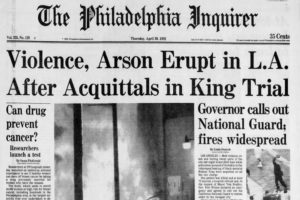 There was a recent undercurrent to the O.J. jury decision, or their decision to nullify the indictment. Rodney King. You might remember the Rodney King trial from 1983 where white police officers were acquitted for beating King, a black man. King’s jury held ten whites, one Latino, and one Asian. Two years later, a reverse racial mixture acquitted or nullified the indictment of O. J. Simpson.
There was a recent undercurrent to the O.J. jury decision, or their decision to nullify the indictment. Rodney King. You might remember the Rodney King trial from 1983 where white police officers were acquitted for beating King, a black man. King’s jury held ten whites, one Latino, and one Asian. Two years later, a reverse racial mixture acquitted or nullified the indictment of O. J. Simpson.
Nullification is an old legal concept. It’s been around for centuries and refers to cases—criminal and civil—where juries side with an accused person (or corporation) and let them off no matter how strong their wrongdoing evidence is. Here’s a definition of jury nullification from Cornell Law School:
Jury Nullification — A jury’s knowing and deliberate rejection of the evidence or refusal to apply the law either because the jury wants to send a message about some social issue that is larger than the case itself, or because the result dictated by law is contrary to the jury’s sense of justice, morality, or fairness.
Jury nullification is a discretionary act and is not a legally sanctioned function of the jury. It is considered to be inconsistent with the jury’s duty to return a verdict based solely on the law and the facts of the case. The jury does not have a right to nullification, and counsel is not permitted to present the concept of jury nullification to the jury. However, jury verdicts of acquittal are unassailable even where the verdict is inconsistent with the weight of the evidence and instruction of the law.
At its core, nullification occurs when a trial jury reaches an anti-fact-based verdict when they disagree with the law or they disagree that the state should be prosecuting the accused. Indictment nullification also happens when the collective jury wants to make a social statement such as racial inequality or persecution.
There’s nothing to stop a jury from nullifying an indictment. Once it’s in the jury’s hands, and inside the deliberation room, it’s theirs to do what they see fit. They hold no currency. They have no account.
O.J. was black. He murdered two whites. The jury was powerfully black. The system was predominantly white. The big reason why O.J. Simpson got off murder was because of jury nullification due to racism.




